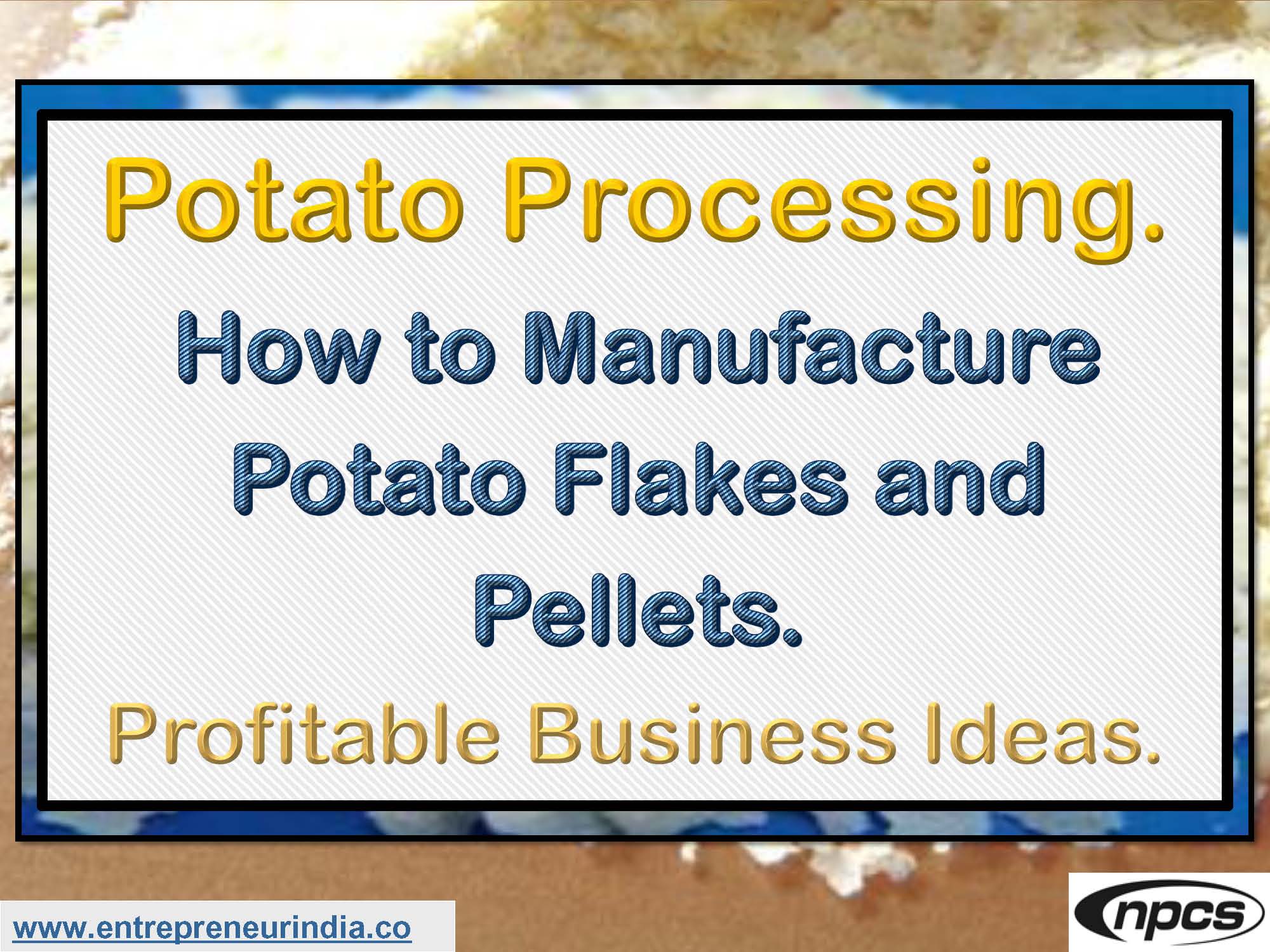
The food processing industry continues to evolve, with convenience, shelf-stability, and versatility leading market trends. Among the most profitable value-added potato products are potato flakes and potato pellets. Both serve different markets—flakes are widely used in instant mashed potatoes and snacks, while pellets are key intermediates for ready-to-fry snacks like chips, sticks, and curls. If you’re wondering how to manufacture potato flakes and pellets effectively, this comprehensive guide breaks down the processes step-by-step, from raw potato handling to final packaging.
How to Manufacture Potato Flakes and Pellets
Manufacturing potato flakes and pellets involves distinct processes, though both start with high-quality raw potatoes and rely on dehydration, shaping, and drying techniques. Let’s explore each process in detail.
See Also : Fruit Pulp Manufacturing Plant
Potato Flakes Manufacturing Process
Potato flakes are dehydrated mashed potatoes with excellent rehydration properties. They are widely used in instant food mixes, bakery products, snacks, and processed meats. Here’s how to manufacture potato flakes efficiently:
1. Raw Material Selection and Sorting
Start by selecting mature, disease-free, high-starch potatoes. High dry matter content ensures better flake yield and texture.
-
Remove dirt, stones, and foreign materials.
-
Sort for uniform size and quality.
2. Washing and Peeling
Wash the potatoes thoroughly using rotary drum washers or spray washers to eliminate soil and contaminants. Then peel them using mechanical peelers (abrasive or steam).
3. Slicing and Blanching
Slice the peeled potatoes into 3–5 mm pieces to ensure uniform cooking. Blanch the slices in hot water or steam at 85–95°C for 5–10 minutes.
-
Blanching deactivates enzymes and removes excess sugars to prevent browning.
4. Cooking
Cook the blanched slices in steam or boiling water until soft enough to mash. The texture should be similar to home-cooked potatoes—firm but tender.
5. Mashing and Additives
Mash the cooked slices into a smooth paste using commercial mashers. Optional additives like emulsifiers, preservatives, or antioxidants can be mixed at this stage to improve shelf life and quality.
6. Drum Drying
Spread the mashed potato evenly onto heated drum dryers. The thin mashed layer dries quickly as the drums rotate at 120–170°C.
-
Dwell time: ~30–60 seconds
-
Thickness: 0.5–1 mm
As the film dries, a scraper blade removes the thin potato sheet from the drum.
7. Flake Formation
The dried potato sheets are broken into uniform flakes using flake mills or crushers. The final product should be light, crispy, and pale yellow.
8. Sieving and Quality Control
Sieve the flakes to remove oversized or fine powder particles. Conduct moisture, texture, and microbial tests before packaging.
9. Packaging
Pack the potato flakes in airtight, laminated pouches or vacuum-sealed containers to prevent moisture absorption. Use nitrogen flushing if required for longer shelf life.
See Also : Start Sugarcane Juice Preservation & Bottling Plant
Potato Pellets Manufacturing Process
Potato pellets are semi-finished products used to make fried or expanded snacks. They offer excellent shelf life and customization in shape, flavor, and texture.
1. Raw Potato Preparation
Use either fresh potatoes or potato flakes/powder depending on the formulation. If using fresh:
-
Wash, peel, and slice potatoes
-
Cook until soft
Alternatively, dry potato derivatives like potato starch or granules can also be used.
2. Formulation and Mixing
Create a dough using potato flour, starch, water, and additives (like salt, seasonings, or binders). The mixing process must produce a homogeneous dough with proper plasticity.
-
Moisture content: ~25–35%
-
Optional ingredients: corn flour, rice flour, emulsifiers
3. Extrusion or Sheeting
Feed the dough into a single- or twin-screw extruder, depending on the desired shape. The extruder cooks, shapes, and partially dries the dough under pressure.
Alternatively, use a sheeter to roll out the dough into thin sheets, then cut them into desired shapes using rotary dies (rings, stars, curls, etc.).
4. Pre-Drying
Dry the shaped pellets in a two-stage drier or belt dryer. Initial drying should reduce moisture to 12–14%.
-
Air temperature: 80–100°C
-
Duration: 15–30 minutes
This ensures the pellets are firm enough to handle and transport without sticking or collapsing.
5. Cooling and Conditioning
Cool the pellets to ambient temperature before final drying or packaging. Conditioning stabilizes internal moisture and reduces breakage during handling.
6. Final Drying (Optional)
Some pellet lines use a secondary drying step to reduce moisture below 10%, ensuring longer shelf life and better frying expansion.
7. Packaging
Package the dried pellets in moisture-resistant pouches or bulk bags. Store in cool, dry conditions away from sunlight.
Quality Control Measures
Whether you’re manufacturing potato flakes or pellets, maintaining consistent quality is crucial. Here’s what to monitor:
-
Moisture Content: Should be below 8% for flakes and 10–12% for pellets.
-
Microbial Load: Ensure hygiene to prevent contamination.
-
Texture & Color: Uniformity in flake size or pellet shape improves end-user satisfaction.
-
Shelf Life: Use desiccants, vacuum packaging, or nitrogen flushing for better preservation.
Equipment Required
Here’s a list of essential machinery for both processes:
For Potato Flakes:
-
Washer and peeler
-
Slicer and blancher
-
Steam cooker
-
Mashing machine
-
Drum dryer
-
Flake crusher
-
Sieving unit
-
Packaging machine
For Potato Pellets:
-
Dough mixer
-
Extruder or sheeting machine
-
Rotary cutter or die
-
Belt dryer
-
Cooler
-
Packaging line
Conclusion
Understanding how to manufacture potato flakes and pellets opens up doors to lucrative opportunities in the food processing industry. Both products offer high market demand, long shelf life, and versatile applications. With the right machinery, raw material sourcing, and quality control, you can build a successful, scalable business in the snack and convenience food sector. Moreover, government support for agro-processing and food startups further boosts the potential of this venture. Whether you’re a small-scale entrepreneur or an established processor, investing in potato value addition is a step toward sustainable and profitable growth.





